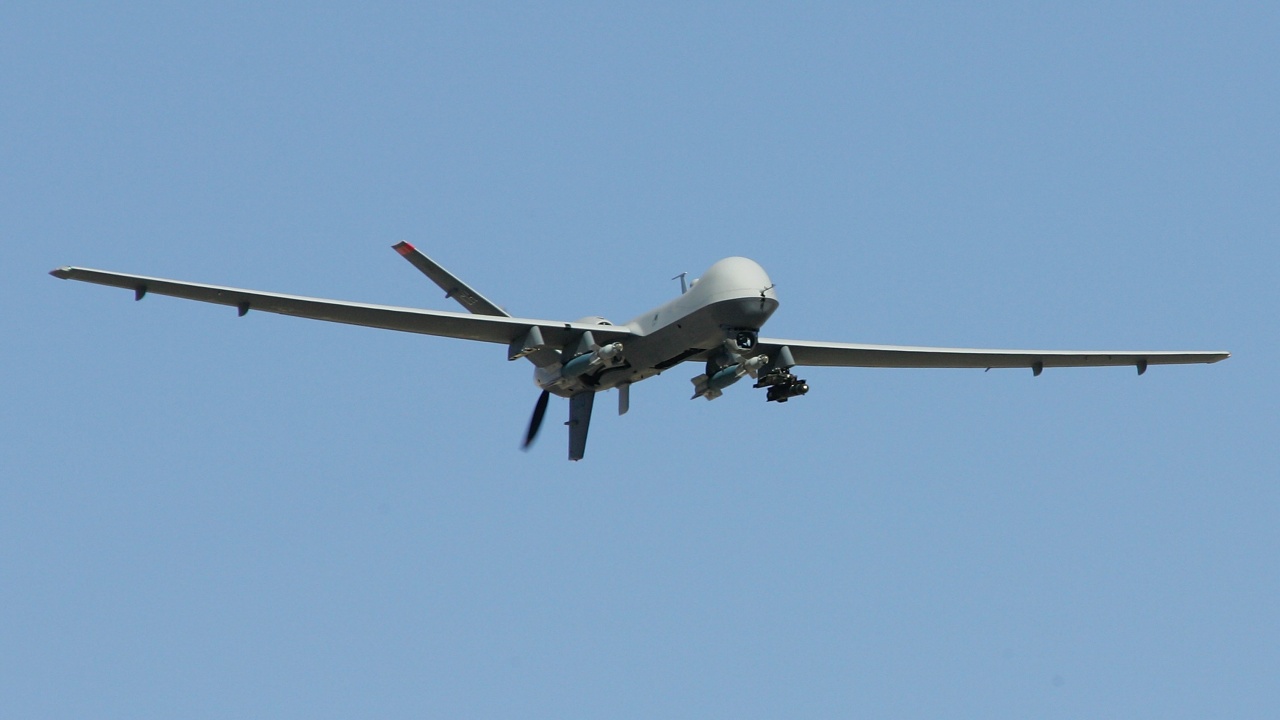Listen to the news
Commercial or military, powerful or small - Ukrainian drones have won recognition in the war against Russia. At the beginning, they contributed to the defense of Kyiv, but then, in Donbass, their limited strategic and operational capabilities came to light, AFP reports, quoted by BTA.
Everything on the topic:
The Russian invasion of Ukraine 6175
In the first days of the Russian invasion, the skies over Ukraine were filled with remote-controlled aircraft performing reconnaissance or combat missions.
Coming from Chinese, Turkish, American factories or Ukrainian workshops, they were a valuable asset to the army of Ukrainian President Volodymyr Zelensky.
Turkish drones "Bayraktar" or (TB-2), a real star on the world market, performed brilliantly in the battle for Kyiv, for example.
"It would be extremely difficult for Ukraine to block Putin's army without drones as it advanced toward the capital," said Paul Lushenko, a U.S. lieutenant colonel and Cornell University researcher.
According to him, the Ukrainians "have managed to greatly increase the logistical and strategic challenges" for the enemy.
The drones improved the intelligence of the Ukrainians and at the same time compensated for the weakness of their air force - they showed "that they can play the role of light replacement aircraft in a collision with a conventional enemy," wrote Odd Thomas, an analyst with the Foundation for Strategic Studies.
The devices are not a new invention - the Americans used them in Afghanistan and Iraq even before their appearance in Syria, Libya, and in Nagorno-Karabakh during the war between Armenia and Azerbaijan.
The Russians themselves use similar ones in Ukraine, but not so effectively "tactically and operationally," said Paul Lushenko.
"They appear to be unable to include drones in their military operations," he added.
However, Kyiv is innovating using commercial drones "for intelligence purposes, in assessing damage and losses, maintaining and setting targets for artillery and for strikes on enemy positions," said Od Thomas.
The Turkish company Baikar is providing Ukraine with three more drones
"Strategically inefficient"
Kyiv has been working on the issue since 2014, when Crimea was annexed and a pro-Russian uprising broke out in Donbass, a region that has become a priority for the Kremlin today.
The Aerointelligence Unit, established this year, brought together private IT companies and constructed military drones based on models for sale.
It was then incorporated into the armed forces, explains Odd Thomas.
Today, the unit "manufactures its own drones, armed with anti-tank munitions such as grenades for hand-held anti-tank grenade launchers (RPGs)" and now has "50 teams of experienced drone pilots," Thomas wrote.
Aerointelligence performs about 300 reconnaissance missions a day against the background of only a dozen flights of Ukrainian aircraft.
However, this effectiveness is now in question.
The trench war in Donbass, in which the artillery was mainly fired, hindered the actions of the drones.
According to Paul Lushenko, they are "strategically inefficient" in the event of an interstate conflict - unlike an asymmetric war between an army and insurgents or a terrorist group.
At the moment, "the proliferation of drones (at the front) is excessive," the American officer said.
Sales of US drones to Ukraine have encountered an unexpected hurdle
Reserves from Ukraine
The website Foreign Policy recently pointed out that some American and Ukrainian officials are watching with reservations the use of Gray Eagle or TB-2 drones against the Russian S-300 and S-400 anti-aircraft systems.
The author of the article, Jack Dech, mentioned "disagreements" over the issue between the Ukrainian General Staff and the front-line troops, which are now limited to 20-30 drone flights a day.
This comes amid a cost problem - a Gray Eagle with a range of about 8 km can operate efficiently near the front, but may be destroyed after one or two missions - not enough for a $ 10 million device.
Especially if we compare it with the far more affordable - for several thousand euros - "Switchblade" and "Phoenix Guest", kamikaze drones (or barrage ammunition), also an American development.
The debate remains open.
Weapons engineers have room for improvement in tomorrow's drones.
Paul Lushenko told AFP that drones were used in pairs in Ukraine: "One small commercial drone sets a target for another that strikes it."
The time of interactive drone swarms is still a long way off, but "today there are drones used in combination, invariably controlled by humans, which is a new element on the battlefield," he said.
Michael O'Hanlan, an analyst at the Brookings Institution, said drones were "important but lacked tactical intelligence."
They are "like cheap prefabricated aircraft models, as vulnerable to high-precision artillery as conventional aircraft," he told AFP.
What is the future?
"The main type of drone we need, but don't have yet, will be a large enough aircraft to carry heavy loads, but small and multifunctional enough not to require a runway," said the analyst.
UK Defense Ministry: Russia is likely to be short of drones in Ukraine
The Russian invasion of Ukraine
drones
